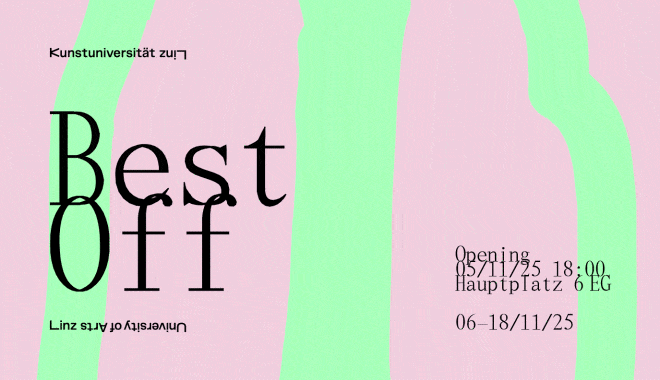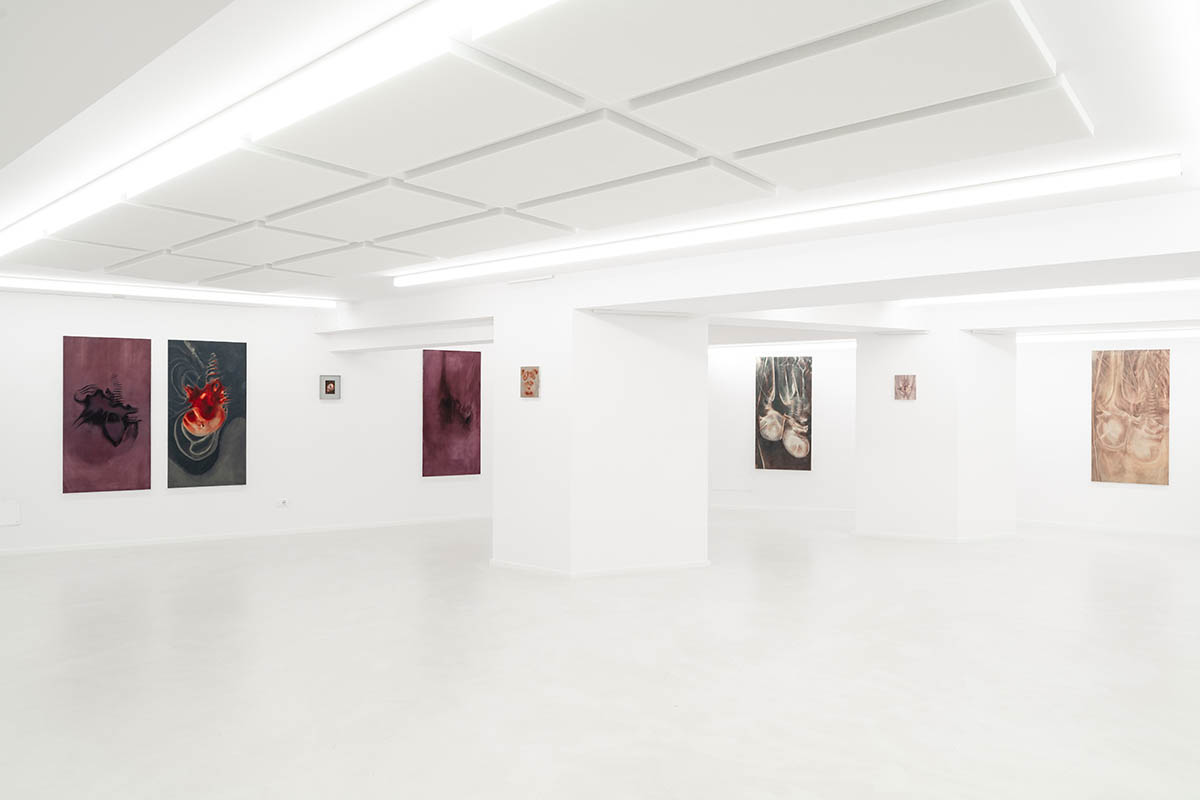
Autotomia was your first solo exhibition. How did the concept for the exhibition come about? How did the poem by Wisława Szymborska influence the conception?
The poem in question is about autotomy, the ability of certain animals to self-mutilate and split apart, abandoning a part of themselves (usually a limb or the tail) to distract a predator and escape. It is a rather disturbing and seemingly violent process, which at the same time embodies the possibility of salvation and liberation. I love this beautiful and disturbing contrast contained within the same phenomenon. I wanted to reflect on pursuing a wholeness that is often illusory and impossible. I think the experience of internal fracture as a coping mechanism is something many people can relate to.
How long have you been working on it?
I started most of the production around six months before the show.
What role does the search for your own body play?
It plays an essential role. I see my work evolving with my daily experiences and awareness of my physical and spiritual selves.
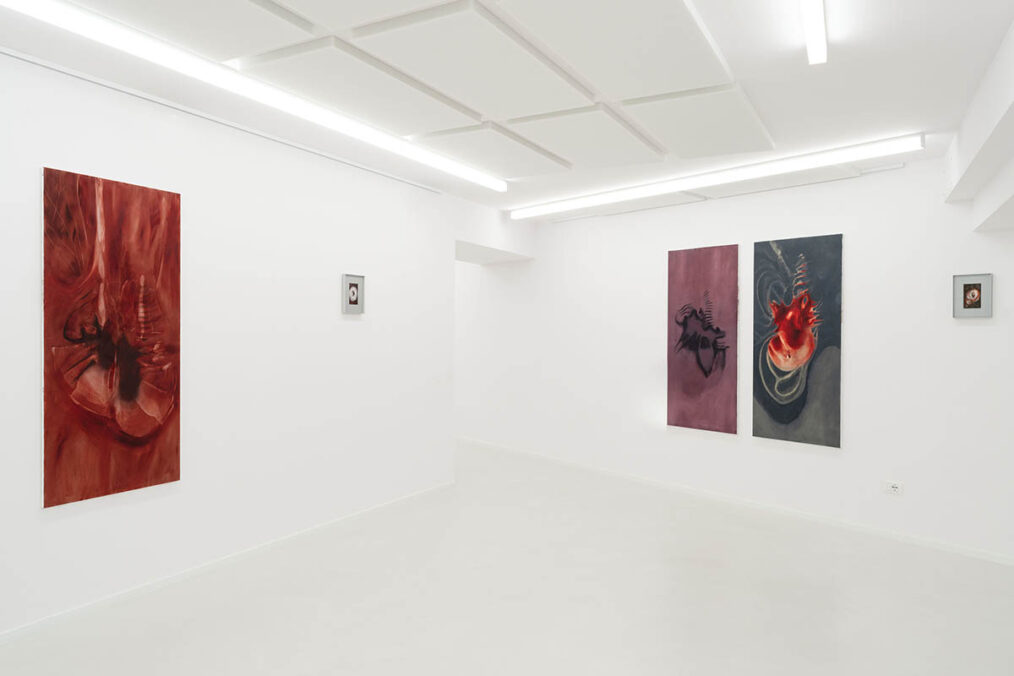
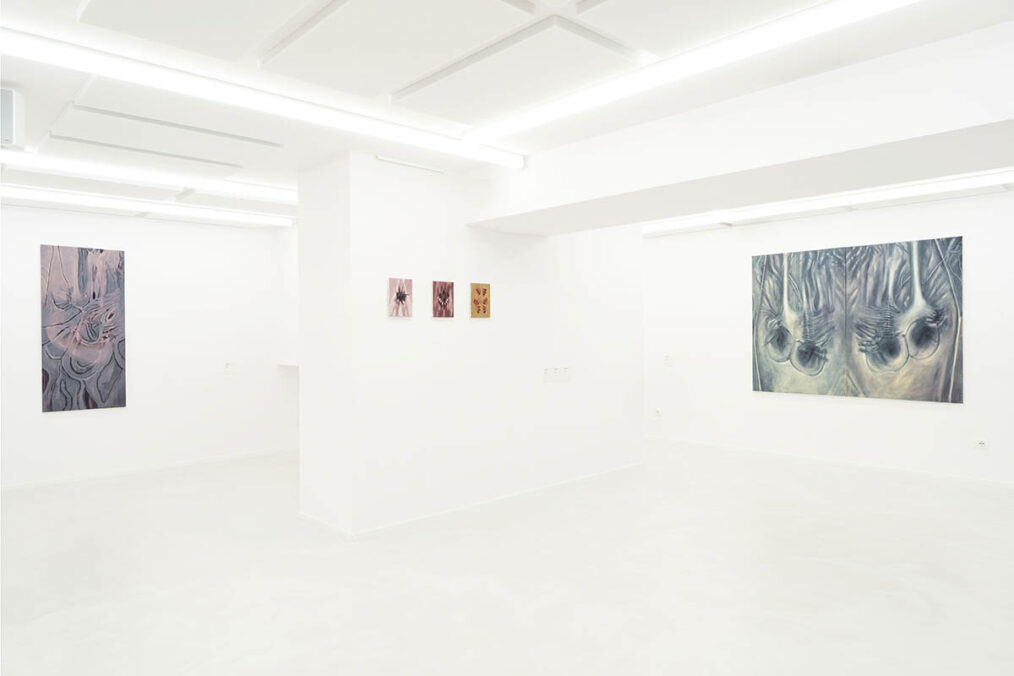
Can you tell us more about the enigmatic visions and semi-abstractions in your works and how they materialize psychological experiences?
In the critical text Sofia Silva wrote for the exhibition, she mentions the visual phenomenon of phosphenes, those dancing violet flashes that appear under the eyelids after looking at a light source. I appreciated this reference because the idea of a private, almost autoscopic vision resonates deeply with my work. In my paintings, I would like to evoke an intangible and emotional dimension simultaneously with a visceral and bodily one, intertwining the concepts of internality and interiority. I aim to maintain a constant tension within this duality, exploring its strange and expansive potential.
What connection do you see between the process of autotomy in animals and the human experience?
It has to do with the necessary dissociation to overcome trauma or with recognizing that at a certain point in your life, your inner adult must take care of your inner child; in that moment, you divide. On several occasions, we leave behind parts of ourselves and split, more or less consciously. I think this image opens up many possible subjective and intimate interpretations, but also universal ones.
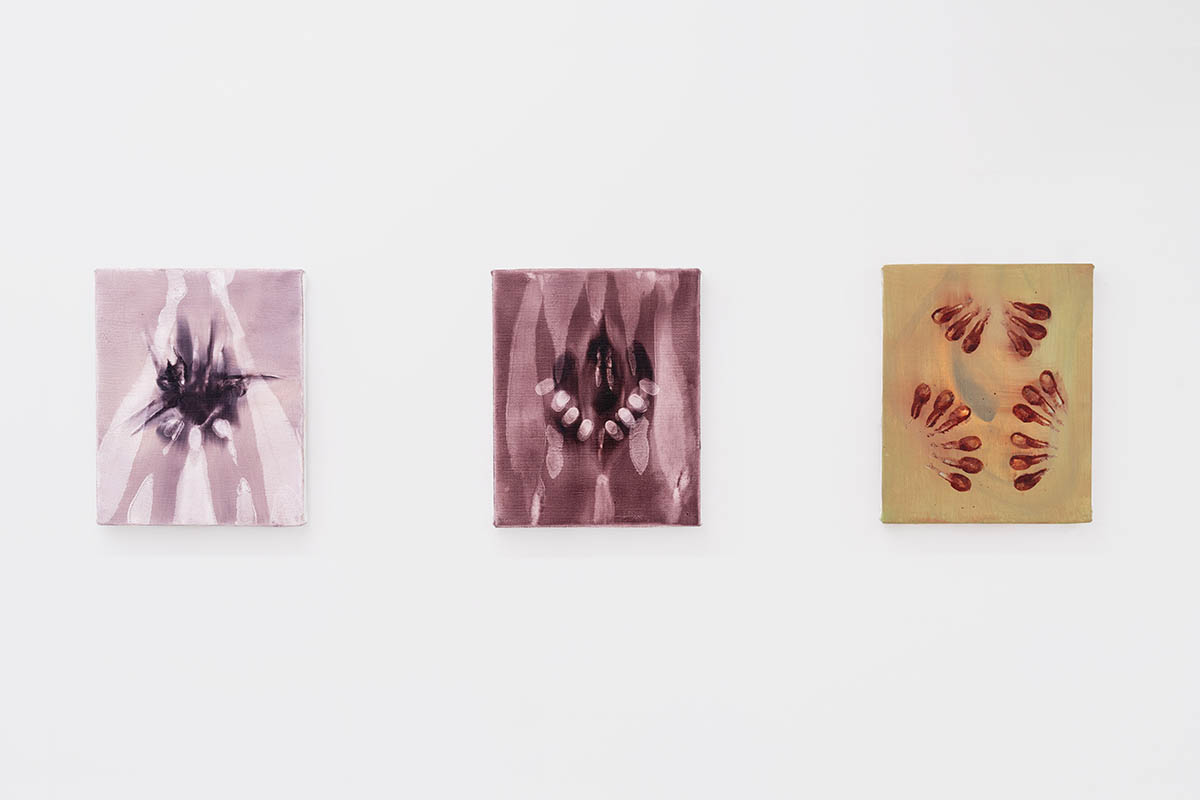
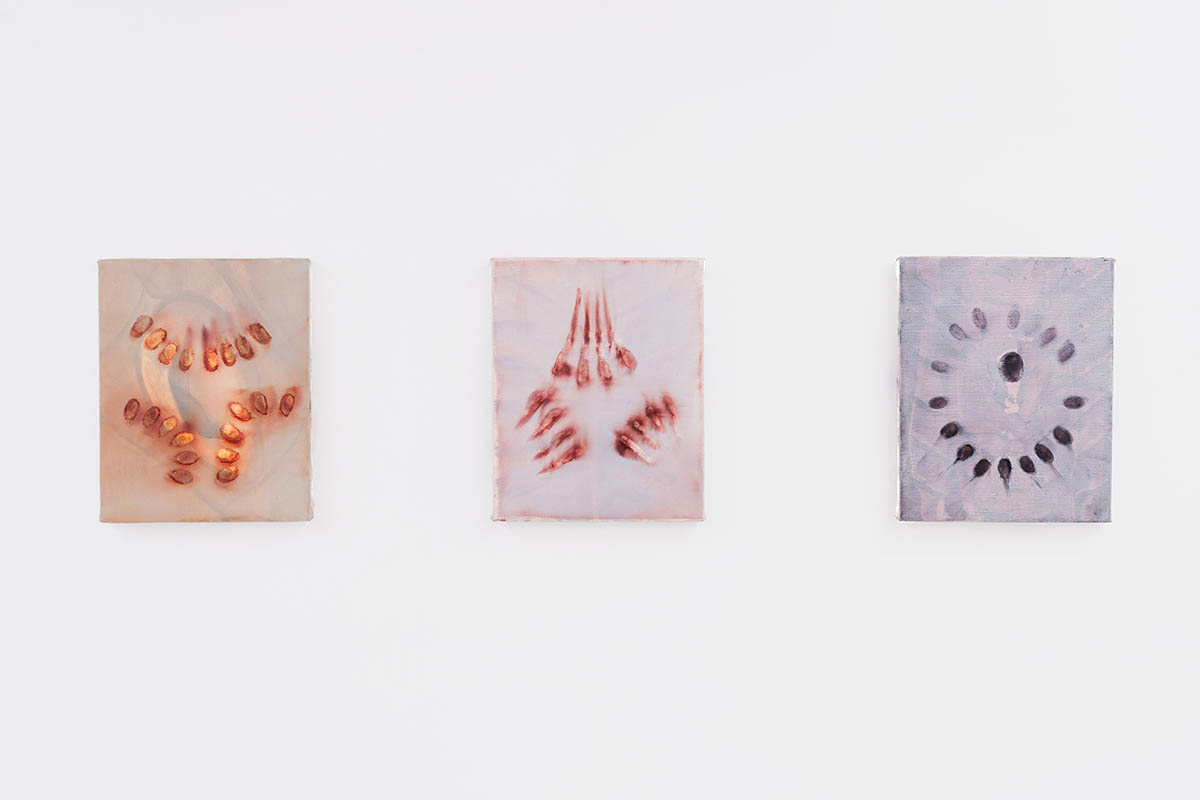
How was your experience on the day of the opening? Did you feel nervous?
It was nice, and I was less nervous than I thought.
What other influences, whether from literature, history, or nature, inspire you?
I have an archive of images that I update frequently, drawing from natural forms, photographic material, and weird elements that I collect. The search for images is a fundamental practice. When I begin to paint, I always start with visual hints, but once I’m in the process, I try to distance myself from representing a specific subject and let my initial references flow into my visual grammar.
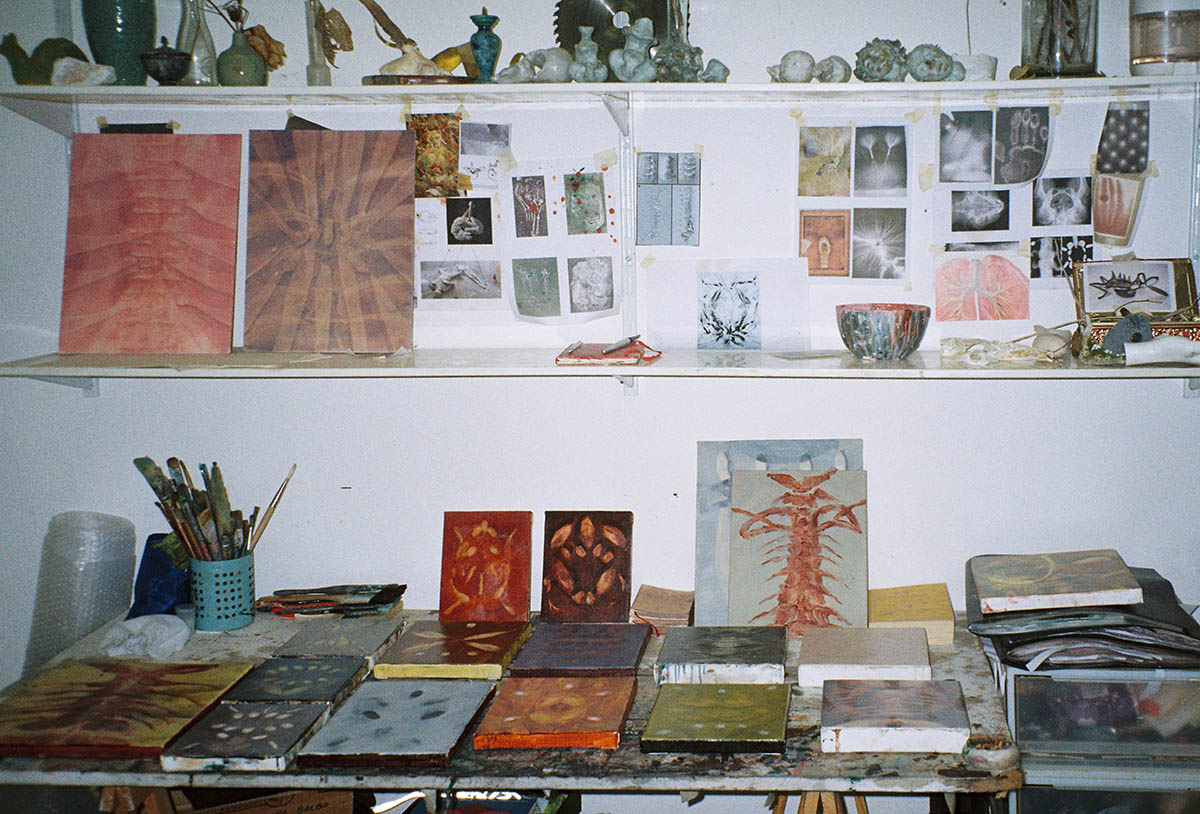
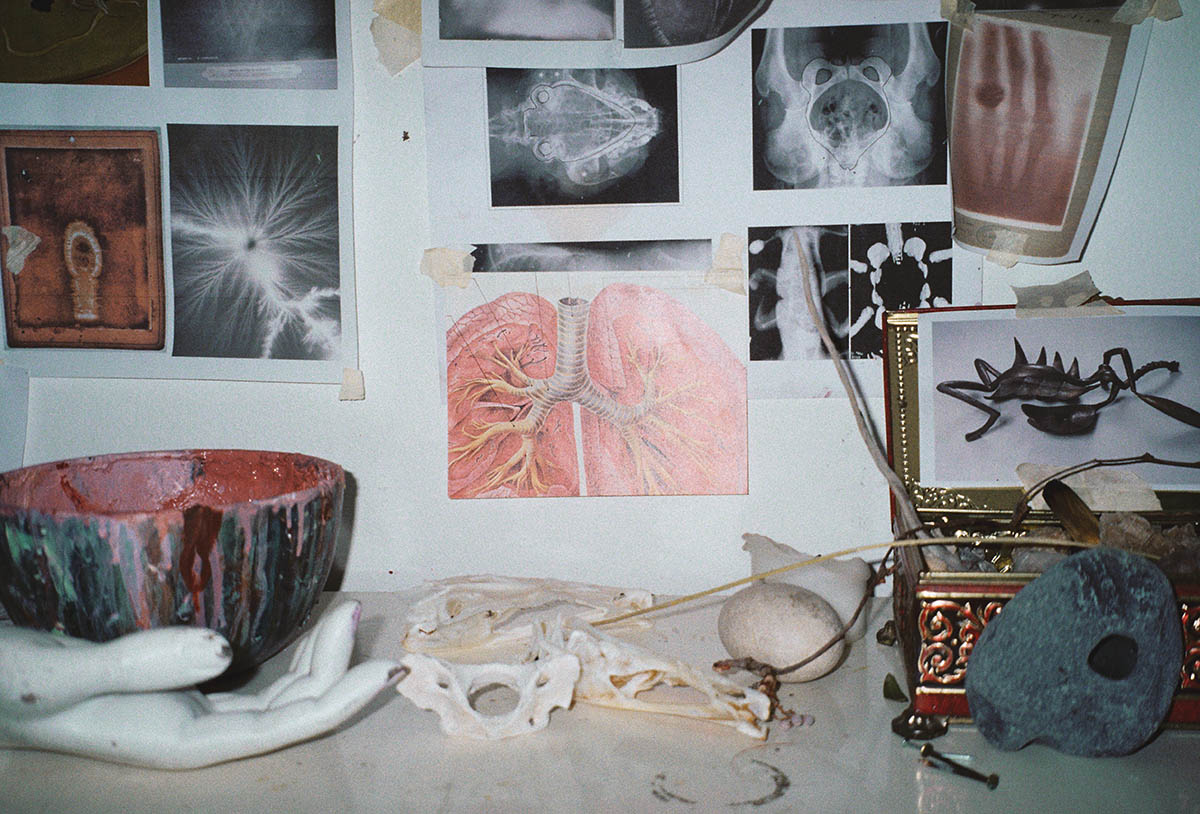
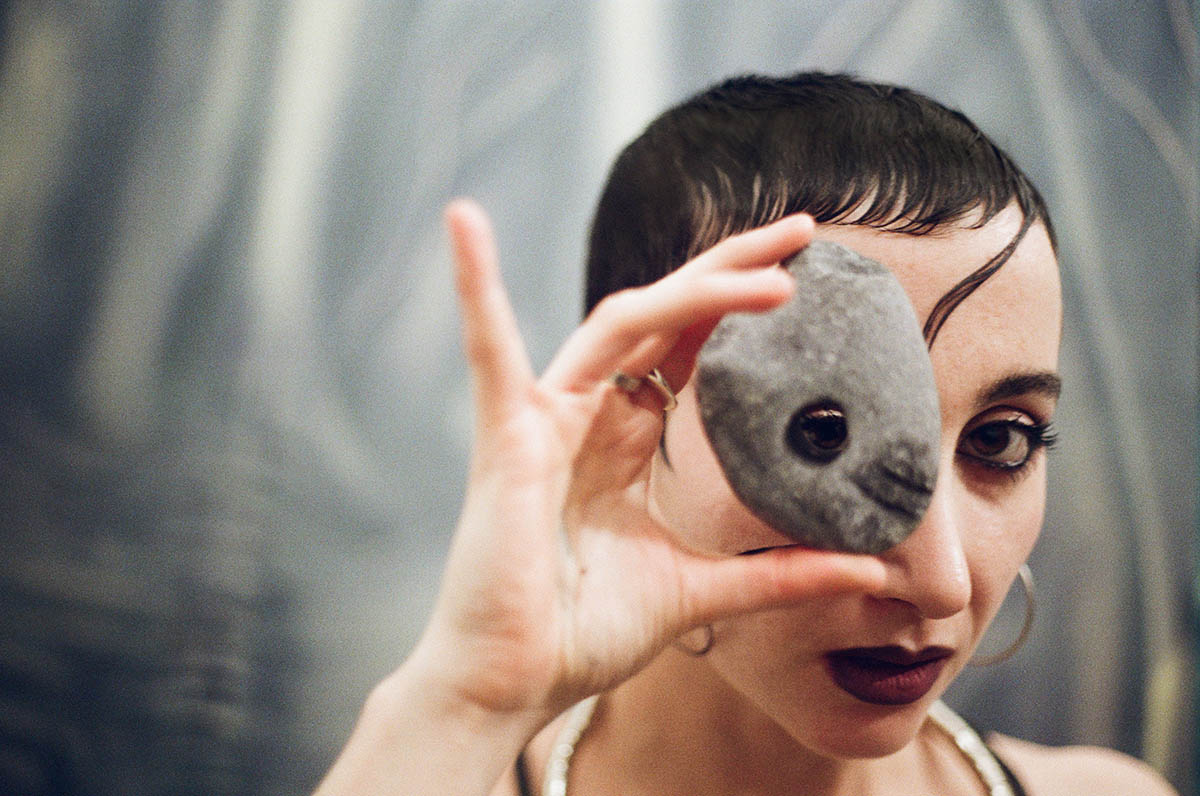
Do you believe in ghosts? Have you ever seen one?
Ghosts interest me from a cultural, poetic, and metaphorical perspective. Sometimes fluid, sometimes immaterial, depending on the context and the period in which they are perceived, they seem to me to be the quintessential liminal objects. I am not sure I saw a ghost, but I think some Poltergeists are wandering around my studio.
What does your studio look like? How does the atmosphere influence your artistic process?
My studio is a basement that my best friend and I transformed into our den in 2021. Gradually, we’ve built a small community of queer artists. The atmosphere is eerie, enchanted, and safe. There are colors and dynamics similar to those of lichens and underwood. Painting can be quite solitary, but my chosen family is always next door; it makes me feel very lucky.
How do you spend the summer?
Looking for amulets.
Ludovica Anversa – www.instagram.com/luvinvrs



